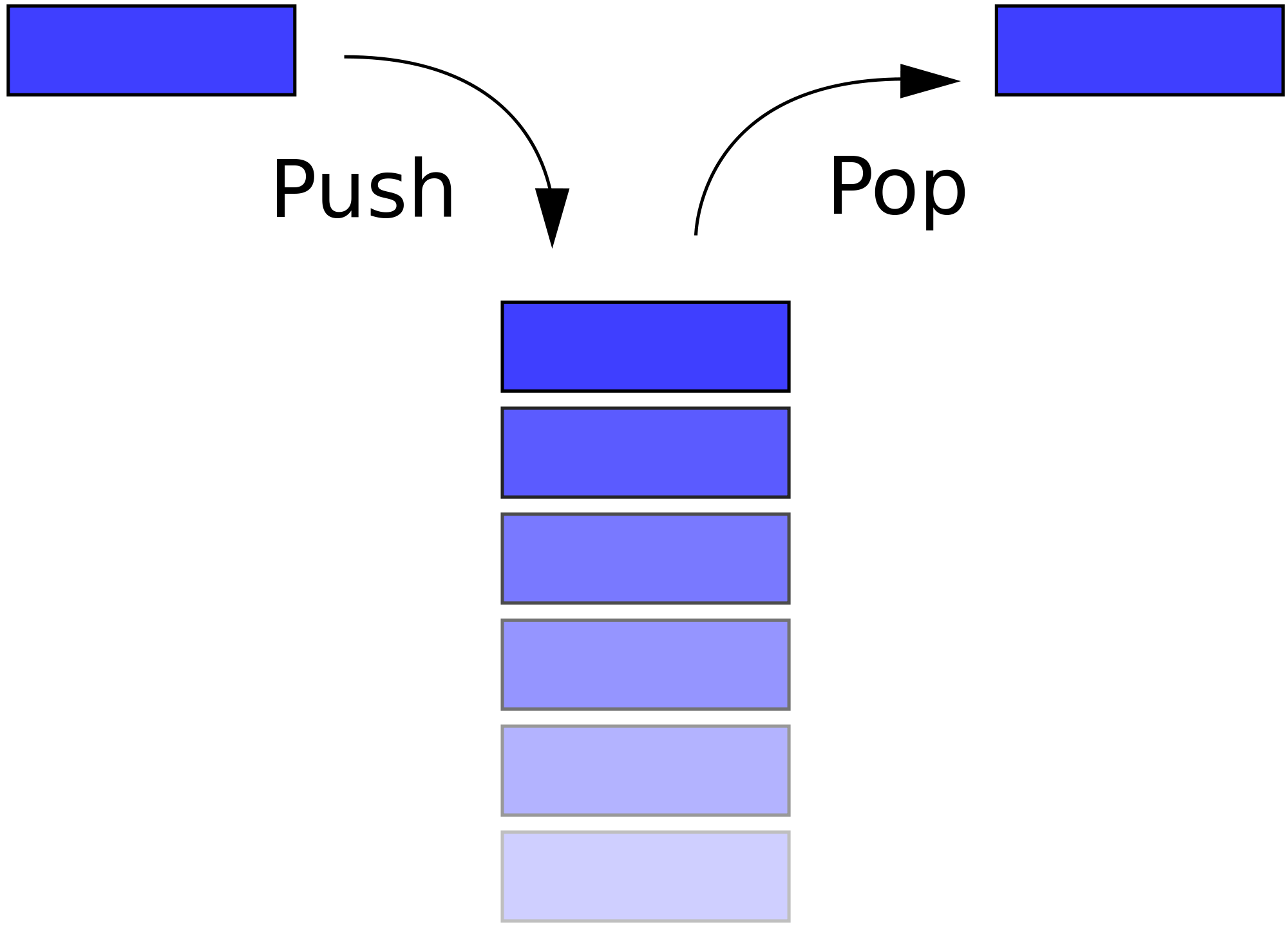Scenes
This page will cover how to use scenes.
As mentioned in the section Cocos Basics scenes are ordered on a stack which is LIFO (Last In First Out). Take a look at the diagram below to help understand this concept

Push and Pop Stack
Scene can be created either in the same file as an existing scene or a new code file. It is recommended to abstract as much as you can from a scene so it is easier to manage and debug. The following topics will be covered in this section:
- Creating a new scene
- Pushing a scene onto the stack - which halts the execution of the current scene then runs and displays the new scene
- Popping a scene off the stack - removes the current scene then runs and displays the scene below (only if a scene exists)
- Replacing a scene - replaces the current scene with the new scene essentially popping the current scene off the stack and pushing the new scene onto the stack
Creating a new scene
#ifndef __NEW_SCENE_H__
#define __NEW_SCENE_H__
#include "cocos2d.h"
class NewScene : public cocos2d::Layer
{
public:
// there's no 'id' in cpp, so we recommend returning the class instance pointer
static cocos2d::Scene* createScene( );
// Here's a difference. Method 'init' in cocos2d-x returns bool, instead of returning 'id' in cocos2d-iphone
virtual bool init( );
// a selector callback
void menuCloseCallback( cocos2d::Ref* pSender );
// implement the "static create()" method manually
CREATE_FUNC( NewScene );
};
#endif // __NEW_SCENE_H__#include "NewScene.h"
USING_NS_CC;
Scene* NewScene::createScene( )
{
// 'scene' is an autorelease object
auto scene = Scene::create( );
// 'layer' is an autorelease object
auto layer = NewScene::create( );
// add layer as a child to scene
scene->addChild( layer );
// return the scene
return scene;
}
// on "init" you need to initialize your instance
bool NewScene::init( )
{
//////////////////////////////
// 1. super init first
if ( !Layer::init( ) )
{
return false;
}
return true;
}var NewSceneLayer = cc.Layer.extend(
{
ctor:function( )
{
//////////////////////////////
// 1. super init first
this._super( );
return true;
}
} );
var NewScene = cc.Scene.extend(
{
onEnter:function( )
{
this._super( );
var layer = new NewSceneLayer( );
this.addChild( layer );
}
} );Note: When adding a new file in Cocos2d-JS update the project.json to reflect this addition.
Running a scene - should only be used once to run a scene at the start of the game (Cocos runs a scene itself by default)
Scene *scene = NewScene::createScene( );
Director::getInstance( )->runWithScene( scene );var scene = new NewScene( );
cc.director.runScene( scene );Pushing a scene onto the stack
Scene *scene = NewScene::createScene( );
Director::getInstance( )->pushScene( scene );var scene = new NewScene( );
cc.director.pushScene( scene );Popping a scene off the stack
Director::getInstance( )->popScene( );cc.director.popScene( );Replacing a scene
auto scene = NewScene::createScene( );
Director::getInstance()->replaceScene( scene );var scene = new NewScene( );
cc.director.runScene( scene );Updated 8 months ago
